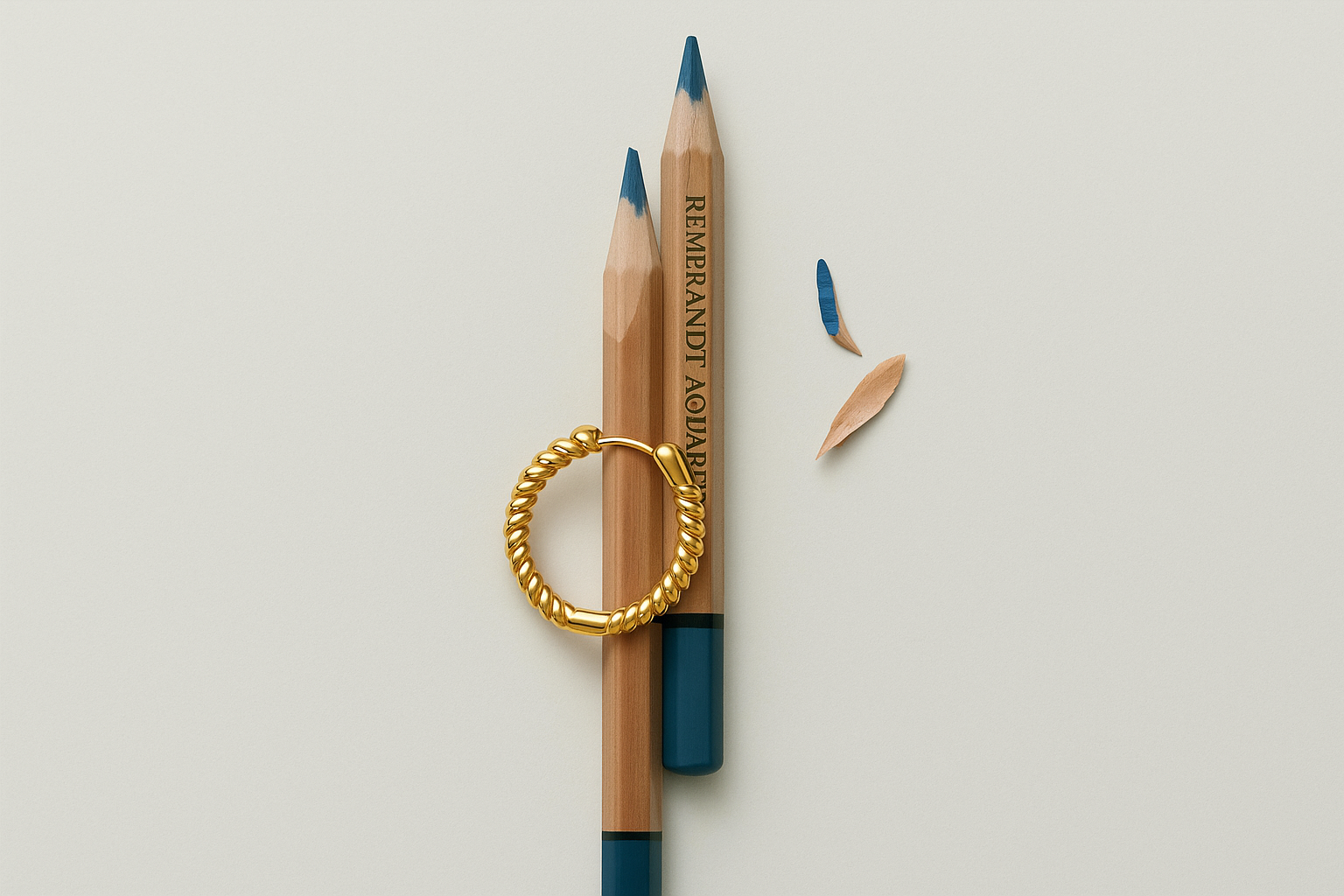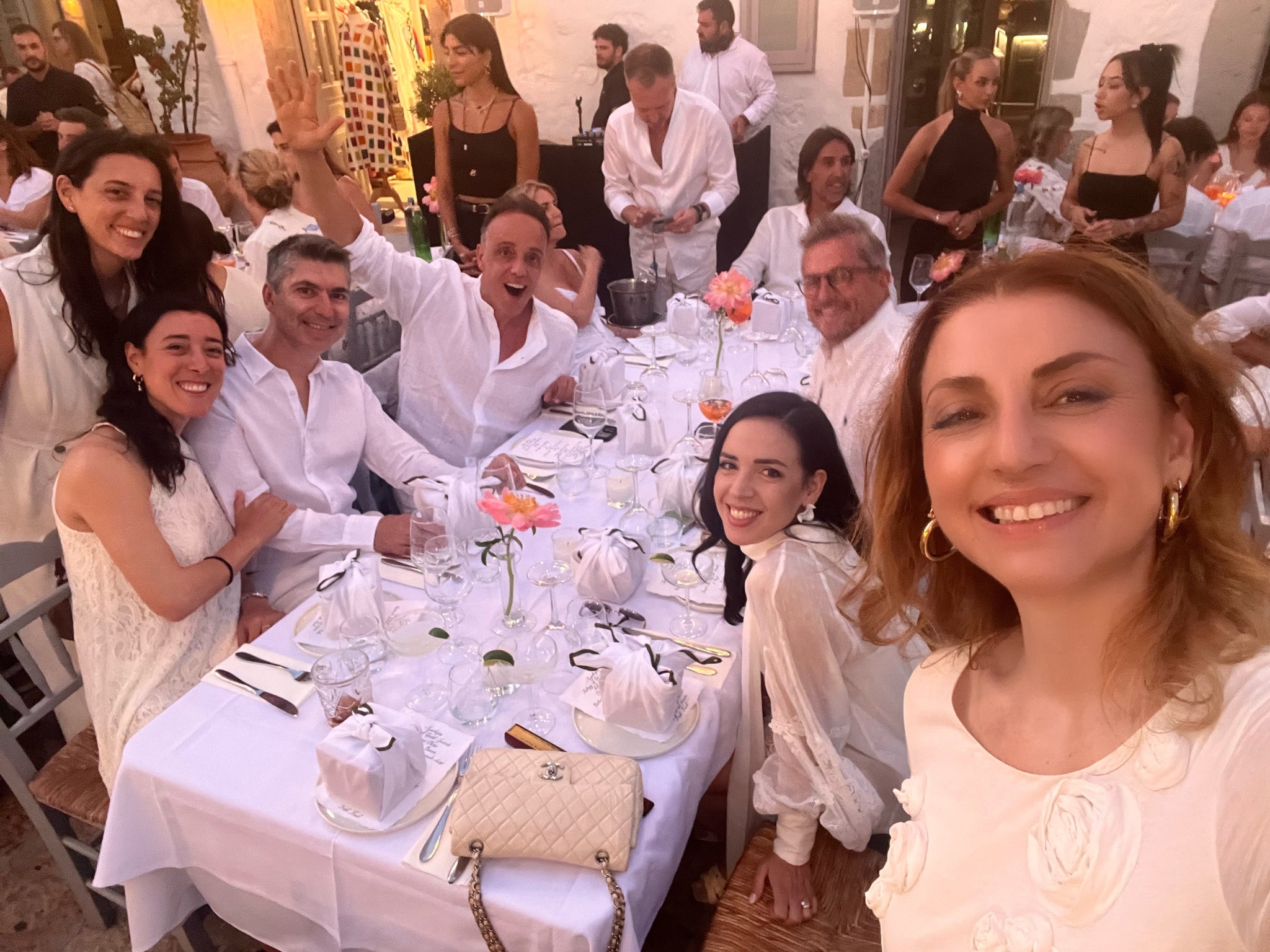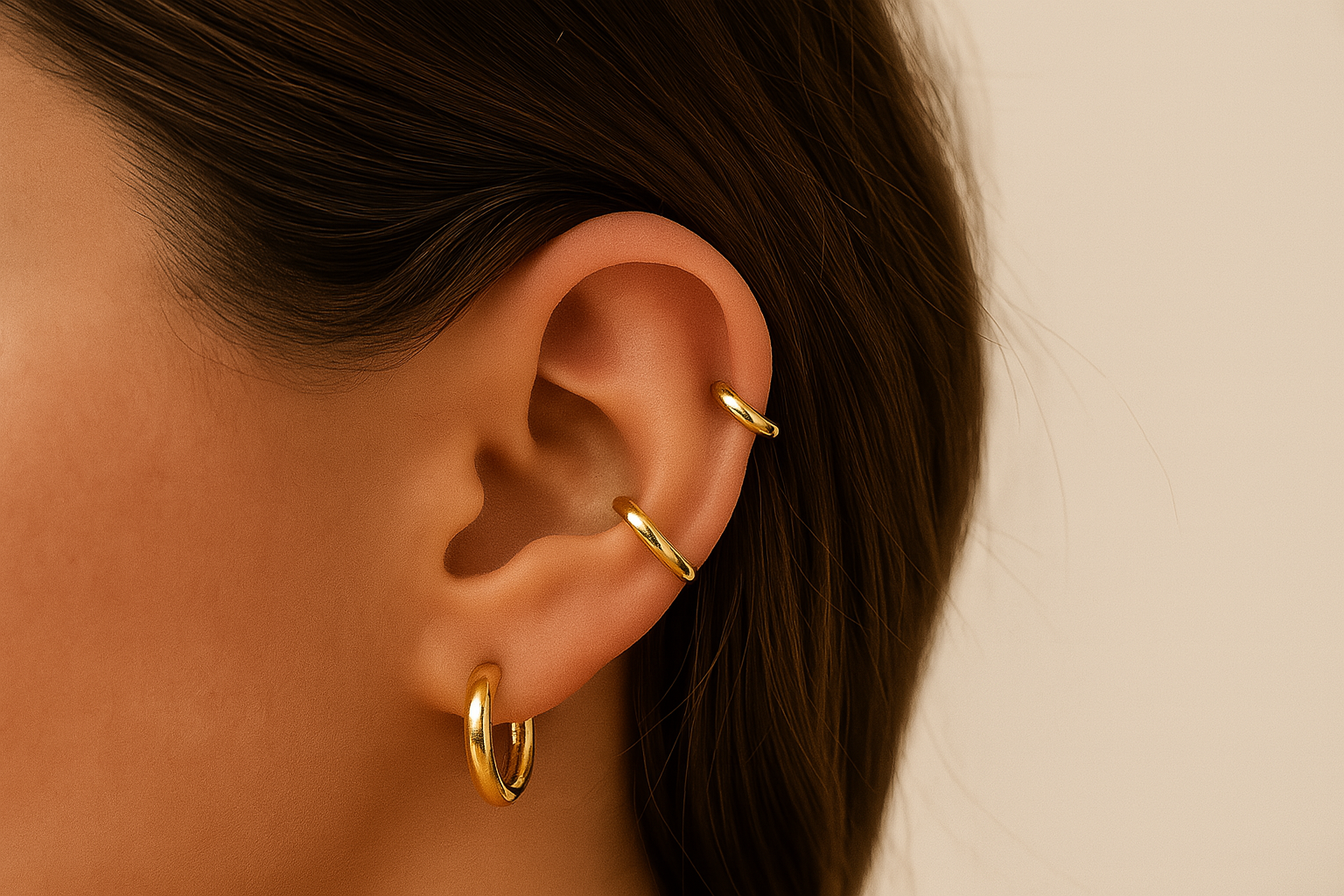Resource Library
Quick Answers
- Best starter metals: implant-grade titanium, 14k+ solid gold (nickel-conscious).
- Lobe healing: ~6–8 weeks. Cartilage: 3–6+ months.
- Needle or gun? Prefer a sterile needle for angle + tissue health. See Piercing Gun vs Needle → .
- When to change jewelry: only when there’s zero redness/tenderness and your piercer confirms you’re healed.
- Planning seconds? Read Your Perfect Second Ear Piercing Style → and shop Ear Stories Stacked Earrings Collection → .
Piercings are timeless self-expression. Whether you’re planning a second ear piercing, browsing ear piercing ideas, or mapping out classy multiple ear piercings, understanding healing, aftercare, and safe materials will keep your stack looking (and feeling) incredible.
Start with our visual atlas Ear Piercing Names → for ear piercing locations, ear piercing positions, and the ear piercing names chart, then dive into the complete Ear Piercing Guide → . If celebrity stacks inspire you (think “Kylie Jenner ears” and editorial curation), browse Celebrity-Inspired Ear Piercings → for ear piercing designs, ear piercing combinations, and simple classy ear piercing ideas.
@galleriaarmadoro I HAVE ENOUGH EARRINGS SAID NO WOMAN EVER Whether you have few or a lot of piercings , we have the tight piece, just for you. When it comes to building your #EarStory ♬ original sound - Adornmonde
General Piercing FAQs
Choose implant-grade titanium or 14k+ solid gold (nickel-conscious) for initial piercings.
Lobes: ~6–8 weeks. Cartilage: typically 3–6+ months (sometimes longer depending on anatomy and aftercare).
We recommend a sterile single-use needle for accuracy and tissue health. Learn more in Piercing Gun vs Needle →.
Only when there’s zero redness/tenderness and your piercer confirms it’s healed.

Piercing types & names & healing time
Orientation
Begin with our visual atlas Ear Piercing Names → (locations, positions, names chart), then dive into the full Ear Piercing Guide →.
Browse Celebrity-Inspired Ear Piercings → for ear piercing designs, combinations, and simple, classy ideas.
Ear Piercing Pain & Healing
Typically 2–3/10 — a quick pinch. Ideal for double earrings and classy upper-lobe looks.
Cartilage (helix, tragus, daith, rook) usually feels more pressure (roughly 4–7/10) and heals more slowly.
- Lobe / 2nd lobe / double lobe: 6–8 weeks
- Helix / forward helix / flat: 3–6+ months
- Tragus / daith / rook: 3–9 months
- Conch / industrial: 6–12 months
- Nostril: 2–3 months • Septum: 6–8 weeks to ~3 months
- Tongue: 4–6 weeks • Navel: 6–9+ months
Aftercare
Use sterile saline twice daily and pat dry with lint-free gauze. Avoid twisting unless your piercer instructs it.
Friction from headphones, masks, hair, tight collars, or sleeping on the new side. Reduce pressure, especially for cartilage.
Start here: Irritated vs Infected Piercing →. Tragus-specific tips: How to Treat Infected Tragus Piercing →.
Aftercare
Implant-grade titanium, 14k+ solid gold, or platinum for initial piercings; confirm nickel content if you’re sensitive.
White gold (often rhodium-plated) is bright and durable; sterling silver is softer and can tarnish. Both are great after healing.
Some brass can react. Our brass is thickly plated in 18ct gold or white rhodium, is hypoallergenic and REACH-certified — best after healing.
Needle vs Gun
For most ear piercings — especially a second ear piercing, cartilage, or multiple placements — professionals recommend a single-use sterile needle.
A needle creates a clean channel, allows precise placement and angle, and causes less trauma. This often results in smoother healing and fewer complications.
By contrast, a piercing gun forces blunt jewelry through the tissue with spring-loaded pressure. Guns can cause tissue damage, swelling, or crooked angles, and they cannot be fully sterilized, which increases the risk of infection.
For detailed pros and cons, read our guide: Piercing Gun vs Needle →.
Needles are sharper and sterile, creating less trauma and allowing perfect placement. Piercers can also choose jewelry that fits your anatomy, rather than the one-size-fits-all studs used in guns. This means better angles, more comfort, and a reduced chance of bumps or rejection.
Some studios still use guns for earlobes only, but even then, risks include misalignment, scarring, and delayed healing. Guns should never be used for cartilage, tragus, helix, or nose piercings — the force can shatter cartilage and cause serious complications.
Many people describe gun piercings as a sharper, more forceful pain, followed by prolonged soreness. Needle piercings, while they may feel like a quick pinch or pressure, typically heal faster and with less ongoing discomfort.
Always choose a needle for seconds. It ensures consistent spacing from your first hole, better angles for earrings to hang straight, and a smoother healing experience — essential if you’re planning classy multiple ear piercings or stacking jewelry like hoops and studs.
Second Ear Piercing
A second lobe hole ~5–8 mm above/beside the first. Pain is typically 2–3/10, healing ~6–8 weeks.
Most lobes look balanced at 5–8 mm (petite 4–6 mm). Match the first-hole angle so earrings hang parallel.
Start with titanium or 14k+ flat-back studs. After healing, explore huggies, pavé studs, cuffs, and chains in Ear Stories →. Deep-dive ideas: Your Perfect Second Ear Piercing Style →.
@galleriaarmadoro PROTECT YOUR HEALTH - CHOOSE HYPOALLERGENIC JEWELRY Jewelry should enhance your life, not risk your health. 🛑 Many affordable pieces contain toxic metals like lead, cadmium, and nickel, which can cause long-term harm. Choosing certified hypoallergenic brands ensures you’re wearing jewelry that’s safe, free from heavy metals, and skin-friendly. Look after yourself by making informed choices. ✨
♬ original sound - Galleria Armadoro 💎
Face Piercings
Nostril, septum, eyebrow, and lip/labret (incl. philtrum/medusa). Healing varies — follow aftercare closely.
Use our symptoms checklist: Irritated vs Infected Piercing →.
Troubleshooting (Bumps, Infection, Rejection)
Pause styling, reduce friction, clean with saline. Start here: Irritated vs Infected Piercing →. Tragus help: Infected Tragus Guide →.
Infection: heat, pain, colored discharge. Rejection: jewelry migrates outward; skin thins over time. Seek professional advice.
Changing Jewelry & Swimming
When there’s no redness, heat, swelling, discharge, or tenderness — and your piercer clears you. Lobes ≈ 6–8 weeks; cartilage longer.
Avoid pools/hot tubs early in healing. If exposed, rinse with sterile saline and dry gently.
Ball back earrings (ball-screw studs) sit low-profile. Find options in Ear Stories →.
Area-Specific Quick FAQs (Nose, Belly Button, Helix, Tragus, Tongue, Conch & Daith)
Healing: ~2–3 months. Change jewelry after full healing; avoid makeup buildup around the site.
Healing: 6–9+ months; costs vary by studio/jewelry. Minimize waistband friction.
Healing: 3–6+ months. Change only after full healing; avoid tight huggies early on.
Healing: ~3–9 months. Earbuds/hair can irritate. Infection help: guide →.
Healing: 4–6 weeks; swelling is common in week one. Follow strict oral aftercare.
Conch: 6–12 months; avoid headphone pressure. Daith: 3–9 months. Shop sleek clickers: Daith & Septum Collection →.
This guide is informational and not medical advice. Your anatomy and health history matter — always follow your professional piercer’s guidance.






















